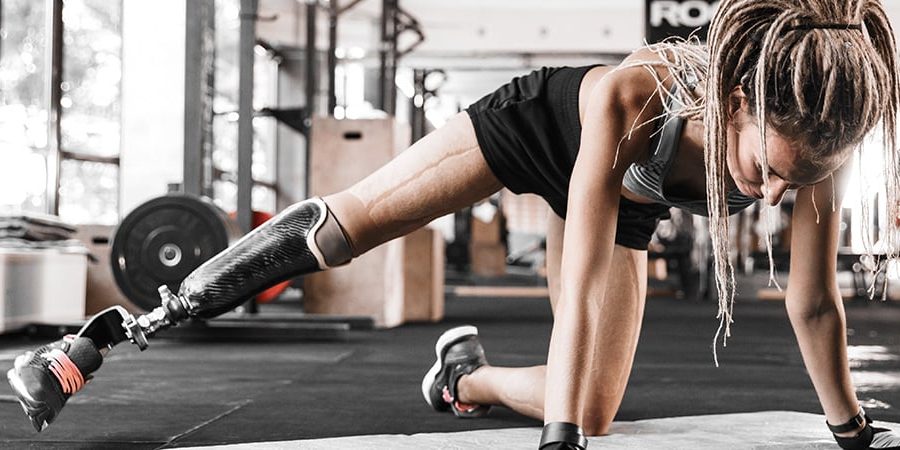The journey of rehabilitation and return to sport, exercise, and recreation (SER) following amputation presents unique challenges and opportunities for both individuals and fitness professionals. The recent study by Justin Z. Laferrier, Matthew Parente, and Duffy Felmlee, published on January 3, 2024, sheds light on this critical aspect of recovery and adaptation. This article aims to distil the findings of their research into actionable insights and strategies for fitness professionals working with clients who have had amputations, culminating in a periodised training programme designed to facilitate a successful return to SER.
Result Analysis
The study by Laferrier et al. explores the multifaceted process of returning to SER activities post-amputation, emphasising the psychological and physical adaptations necessary for success. Key findings highlight the importance of a holistic approach to rehabilitation, incorporating not just physical training but also psychological support to overcome barriers to participation in SER activities.
One of the study’s significant insights is the role of tailored exercise programmes that account for the unique needs and capabilities of these clients. It underscores the necessity of building strength, flexibility, and endurance while also fostering a positive self-image and resilience in the face of challenges.
Tips for Fitness Professionals
Based on the study’s findings, fitness professionals can adopt several strategies to enhance their training programmes for this demographic:
- Individualised Assessment: Begin with a comprehensive assessment of the client’s physical capabilities, prosthetic fit, and psychological readiness. Understanding the client’s specific type of amputation, level of pain, and any comorbidities is crucial for designing an effective programme.
- Psychological Support: Recognise the psychological impact of amputation and incorporate motivational interviewing and goal-setting techniques to foster a positive mindset and resilience.
- Prosthetic Education: Educate yourself and your client on the use and maintenance of prosthetics, as well as their limitations and capabilities within various activities.
- Gradual Progression: Implement a gradual approach to increase intensity and complexity of exercises, allowing for adaptation and preventing injury.
- Functional Training: Focus on exercises that mimic daily activities and SER interests of the client, enhancing both physical capability and confidence in real-world scenarios.
- Educate on Holistic Health: Educate clients about the importance of a balanced diet, adequate sleep, and stress management in conjunction with their exercise programme.
Periodised Programme Based on Study Results
A periodised training programme for clients who have had an amputation, returning to SER should be phased to gradually build up physical capacity and confidence. Here’s a basic framework:
Phase 1: Foundation Building (Weeks 1-4)
- Objective: Enhance basic strength, flexibility, and cardiovascular fitness.
- Activities: Low-impact cardio (swimming, cycling), basic strength training (bodyweight exercises, resistance bands), flexibility exercises.
- Frequency: 3-4 sessions per week.
Phase 2: Functional and Prosthetic Adaptation (Weeks 5-8)
- Objective: Improve functional movement patterns and comfort with the prosthetic in various activities.
- Activities: Circuit training incorporating exercises that simulate daily and recreational activities, balance and coordination drills.
- Frequency: 4 sessions per week.
Phase 3: Sport-Specific Training (Weeks 9-12)
- Objective: Prepare for specific SER activities the client aims to return to.
- Activities: Tailored exercises that mimic the demands of the chosen sport or activity, including agility drills, sport-specific technique training.
- Frequency: 4-5 sessions per week, with at least one session focused on skill development.
Phase 4: Maintenance and Progression (Weeks 13+)
- Objective: Sustain fitness levels and continue improving performance in specific SER activities.
- Activities: Ongoing sport-specific training, advanced strength and conditioning, participation in recreational leagues or events.
- Frequency: Varied, depending on the client’s goals and schedule.
This periodised programme is a starting point and should be customised based on the individual’s progress, preferences, and feedback. Regular reassessment and adaptation of the programme are essential to meet the evolving needs of the client.
The study by Laferrier et al. provides valuable insights for fitness professionals working with clients with amputations. By adopting a holistic, individualised, and phased approach to training, professionals can significantly impact their clients’ ability to return to and thrive in SER activities.
References:
- Laferrier, J. Z., Parente, M., & Felmlee, D. (2024). Return to Sport, Exercise, and Recreation (SER) Following Amputation. Journal of Rehabilitation and Exercise Science Click here to review the full research article.
Gain the Skills to Train Clients wiht Disabilities
Unlock the potential of your fitness career with our Programming and Supervising Exercise with Clients with Disabilities course! Developed by industry experts, this comprehensive programme equips fitness professionals with the knowledge and skills needed to effectively train and support clients with disabilities on their fitness journey. Learn evidence-based strategies, including insights from recent studies such as the one on “Return to Sport, Exercise, and Recreation (SER) Following Amputation“, to tailor exercise programmes that meet individual needs and goals. Gain confidence in providing inclusive and empowering fitness experiences while making a positive impact on your clients’ lives. Get started today and take your career to the next level!
Exercise for Clients with Disabilities Course – Distance Study
